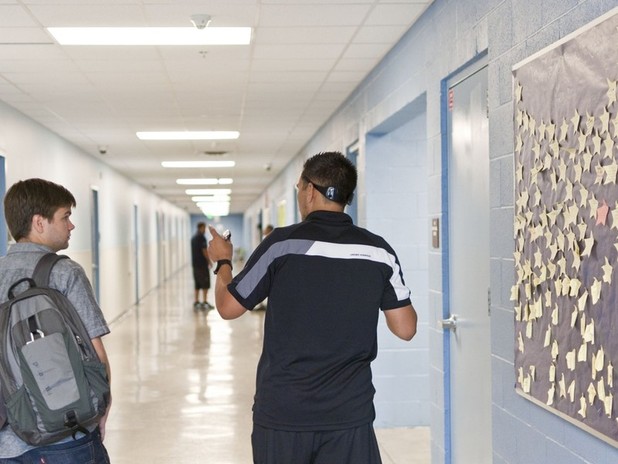September 10, 2012
By definition, people are at the core of human-centered design process. But how do we find the right people to talk to as part of our research? IDEO.org Fellow Danny Alexander considers this question and more as his PHE team continues their Hear research in California.
At IDEO.org, we spend a great deal of time interviewing and observing people, and designing solutions that align with their needs, interests and aspirations. But where do we find the people that we're speaking with? And how do we know that we’re talking with the right ones? And how many people are enough?
Last week in our work with Peer Health Exchange (PHE), these questions came front and center for us as we simultaneously tried to figure out what we wanted to learn and whom we wanted to learn it from. It’s a bit of a chicken or egg dilemma: it’s hard to know what areas to probe deeper into without first talking to a few people, but it’s just as hard to know which people to talk to without knowing what we’re looking to learn. Here’s how we approached the challenge:
- Figure out what to learn: Since we’re redesigning the PHE volunteer experience, we first wanted to understand the experience as it stands today. PHE trains college volunteers to teach a health education curriculum in under-resourced high schools, so we knew that many of our insights and inspirations would come from digging deeper into the lives of PHE’s college volunteers. With this in mind, we sought to understand the other forces vying for volunteers’ time and energy, and how the experiences of PHE’s volunteers intersects with that of the high school students they’re teaching. We also made plans to look beyond PHE, and understand analogous models of education, recruitment and volunteer management.
- Find the best people to learn it from: Once we had a sense of what we were looking for, we crafted a plan for recruitment. Knowing we’d only be able to meet with 10 to 20 people, we sought a mix of PHE students, volunteers and staff, outside experts, and other people with extreme experiences that we could learn from. It may be counterintuitive to focus on “extreme users” but it’s often the source of the most direct and unfiltered feedback. As one example, we contacted PHE volunteers who have left the program to talk about what challenges led them to move on. Using a mix of PHE’s network, our own personal networks, and craigslist recruiting, we’ve been able to find a great mix of people, and are thrilled to be making our way through the interviews now.
- Plan the best ways to learn it: Everyone has their favorite research methods and it’s always tempting to start the process finding ways to use them. Ultimately, though, the methods we employ are tools, and should only be used to help us uncover specific information from the people we’re hoping to learn from. With that in mind, we looked through the research plan and tried to anticipate which information would be difficult to obtain from a straightforward question, and created research tools to help us ease the information into the discussion. For example, we used a human-centered design method called “Sacrificial Concepts” to give volunteers concrete (albeit provocative) scenarios to react to, rather than simply asking them what they’d improve about the existing experience. We also created flash cards of health facts and then asked the teenagers we spoke with to teach us these facts. This was a much more productive way of asking “how do you make health information relevant?” We’ve been using one or two human-centered design techniques per interview, modifying and adding to our toolbox as we progress.
- Anticipate that which is impossible to anticipate: This sequence has worked well for us so far, but what’s been most important has been a willingness to change directions mid-course. Though we tried to anticipate as much as we could in the planning stages, a single conversation sometimes opens new doors or deflates an early idea, and by avoiding attachment to ideas and tools too early in the process, we’ve been able to be responsive and keep pushing forward. We’ve left room for last-minute interviews, and have been making and modifying research tools like it’s our job (which I guess it is…), and we will continue to be flexible throughout the remainder of the project.
Human-centered design is as much an art as a science, and there’s no way to know for sure that enough people—or the right people—are being interviewed. But by working backwards from the intended learnings and staying flexible we’ve found it easier to make sure we’re headed in the right direction.








